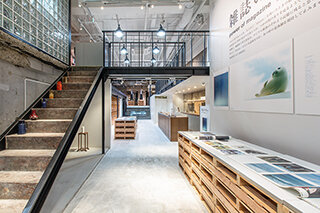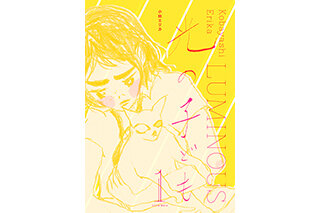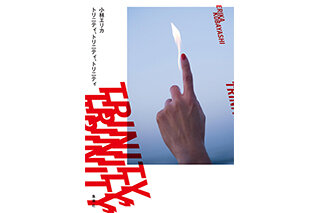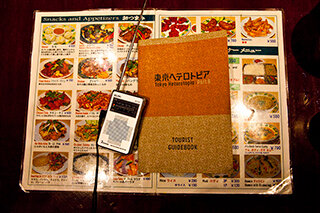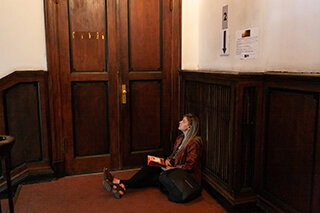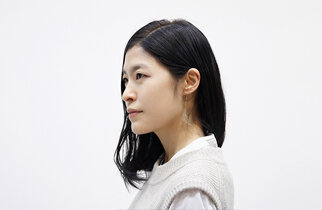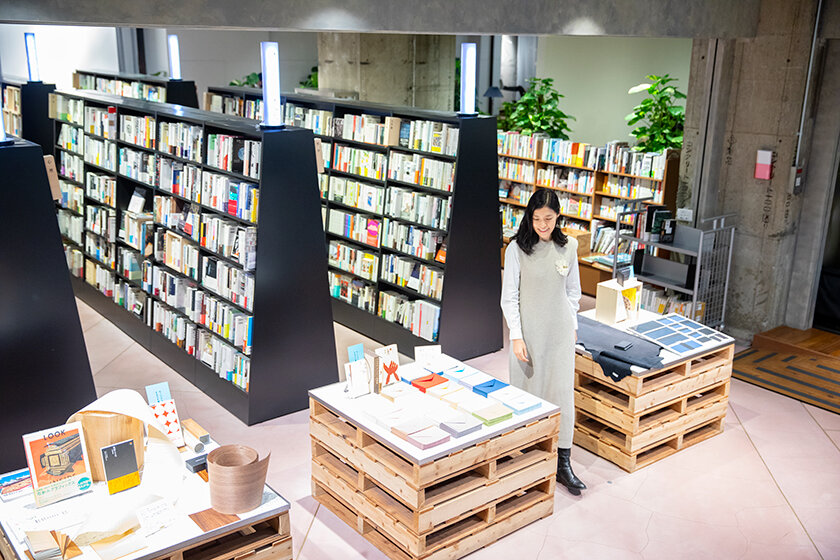

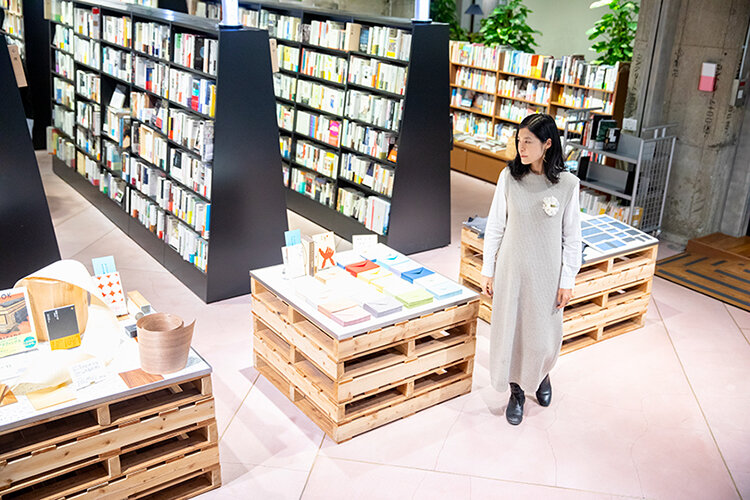
INTERVIEW
124
Erika KobayashiNovelist / Manga artist
Exploring the Remnants of History Buried in Cities
"Things that are invisible to the eye" exist within a one-meter radius
A novelist and manga artist, Erika Kobayashi weaves to and fro between a wide range of mediums to present the worlds she depicts through video, drawings, and text. Although her mode of output varies, "things that are invisible to the eye" are ever-present as a central theme. These invisible things are in no way extraordinary. They are things that exist in anyone's life, such as family, emotions, consequential choices, time—things that are within reach in a one-meter radius. How do we face those "things that are invisible to the eye," or perhaps the things that we choose not to see? Kobayashi's art and stories include hidden hints for thinking about such perspectives.
A place that provides relief and a sense of ease
When I was young, I had the impression that Roppongi was a town for grownups and I was always nervous coming here. Before this spot we're in now became Bunkitsu, it was the Aoyama Book Center Roppongi store, which was the only place that didn't make me nervous. Unfortunately, it closed down in 2018, but the fact that another book-related establishment Bunkitsu was established in its place was a huge relief for me and one of the reasons why I feel at ease coming to Roppongi now.
Bunkitsu
Opened in 2018 as "a bookstore for meeting books," this unconventional bookstore charges an admission fee and provides a space for indulging in culture, with approximately 30,000 books for sale ranging in genres from the humanities and natural sciences to design and art. It comes equipped with a reading room for solitary reading, a study room for groups, and a cafe room for light meals and snacks. The entrance area sells unusual magazines and puts on periodic themed exhibitions.
Since I've become a grownup, I have had the chance to show my work at Mori Art Museum and The National Art Center, Tokyo, and for several years now the Yutaka Kikutake Gallery has been my main gallery for exhibitions, so Roppongi has become a familiar area that I go to a lot. I go to every new exhibition in Roppongi, and there are places like Bunkitsu and many other wonderful bookstores and museums. Sometimes I like to hop from one favorite to another.
Yutaka Kikutake Gallery
A Roppongi gallery opened in 2015 by owner Yutaka Kikutake. It works with both Japanese and visiting artists to put on exhibitions of ever-diversifying modern art and engage in other progressive artistic endeavors. It features painting, photography, sculpture, and film from the same era at any one time, and supports art from a variety of angles such as holding artist talks and publishing exhibition catalogs and artist books. The photo is from Kobayashi's solo exhibition 1F in the Forest of Wild Birds (2019).
Writing means you can transcend death and go on living
Encountering books was very significant in my upbringing. My discovery of The Diary of a Young Girl by Anne Frank when I was ten years old was how I started thinking about the central theme in my works, "things that are invisible to the eye." Anne Frank's quote "I want to go on living even after my death!"* was eye-opening for me even as a child because I thought, "Writing means you can transcend death and go on living." Ever since, I dreamed of one day growing up to be an author or a journalist.
Even now that I am grown, I occasionally think about the fact that we can read Anne Frank's writing even though she herself is gone, and I find that deeply moving. On the other hand, the reality that we will never get to read what Anne Frank would have written as an old woman has had a big impact on me as well. One turning point was the discovery of my own father's diary when I was around thirty years old. He had written the diary at the age of sixteen or seventeen during World War II, and it was strange to think that the eighty-year-old father I knew had written what was in there. Additionally, it made me realize that my father was born in the same year as Ann Frank (1929), which I found doubly incredible. It meant that if Anne were alive, she would have been an eighty-year-old grandma.
From that point on, I found myself thinking about traces left behind by people's lives—the little moments that weren't recorded in diaries. In particular, my thoughts turned to those with no diaries, who nevertheless must had had moments that were just as important in their lives. How could I, as a person living and breathing today, use pen and paper to identify and salvage those lost moments and traces of people's lives? Ever since I started wondering about that kind of thing, my central theme has been "things that are invisible to the eye."
※from Anne Frank: The Diary of a Young Girl (Bantam Books, 1993), by Anne Frank, Translated by B. M. Mooyaart

Invisible traces that will still remain in 3503 A.D.
The topic of radioactivity crops up often in my works. Like everyone else, it definitely became a more immediate topic for me following the TEPCO Fukushima Daiichi Nuclear Power Plant accident in the 2011 Tohoku earthquake and tsunami. However, I had actually been interested in what we call "radioactivity" and its related history even before the disaster. That interest led me to discover the existence of laboratory notebooks by Marie Curie, who discovered radioactive radium and received the Nobel Prize twice, in Physics and in Chemistry. A search revealed that one of her notebooks is actually kept in the library at Meisei University in Japan. At first glance, it looks nothing more than a charming cloth-bound notebook, but holding a Geiger counter up to it gives a faint indication that something is there. I was told that because Marie Curie handled highly radioactive materials with her bare hands, any fingerprints left in the notebook still give off measurable radioactivity.
Marie Curie held radium in her hands for the first time in 1902, nearly 120 years ago. Considering that the half-life of radioactive radium is thought to be 1601 years, her fingerprints on the notebook will still be radioactive in the year 3503 A.D. Although somewhat ironic, I suddenly felt that it connected in some way to Anne Frank's wish to "go on living even after [her] death." The people in that distant future may not remember Marie Curie's name, but the traces of her life will remain. Given that, I thought it might be important to write about the issue of radioactivity and nuclear power in a way that transcends the questions of right or wrong and for or against. That is what I do in my LUMINOUS books, as well as in other past series and installations.
LUMINOUS
The scientist Marie Curie, who Kobayashi talks about in this interview, called the radioactive elements she discovered "her children." LUMINOUS unravels the history behind these elements through the eyes of a boy named Hikari and a cat named Alvin who are transported through time. When, from where, and how did radioactivity come to be? Kobayashi uses the graphic novel format to depict a story that interweaves actual history with fiction.
Starting with the assumption that I don't know
My father's diary also got me thinking about another thing. To me, he had always been a father and an adult, but the person in the dairy is much younger than I am now, a sixteen- or seventeen-year-old boy concerned about adolescence. Even though I spent decades with him, I realized that there was a vast expanse of things beyond our time together that I have no means of knowing or talking about. Not being able to know about one another seems like cause for despair, doesn't it? But actually, the realization that I had assumed I knew him was what really made me sad.
Assuming you know something is liable to happen at any time. The first time I got to step inside the TEPCO Fukushima Daiichi Nuclear Power Plant, I suddenly had a reality check. Even though I had written that "radioactivity is invisible" so many times up to that point, I still somehow had it in my head that there would be visible indications such as scattered debris and overgrown forest. But the actual premises were not overrun by vegetation—just silvery mortar on all sides like in a science fiction movie. The building even had a Lawson convenience store inside, no different from the one in my local neighborhood. When I saw that, I realized that I had unconsciously thought of places polluted by radioactivity as existing in some other world that had nothing to do with me.
From then on, I tried to stop assuming I knew and imagine things knowing that I didn't know. Instead of trying to visualize things that couldn't be seen, I tried to convey those invisible things the way they were. My first creative attempts with this new attitude resulting in my latest book Trinity, Trinity, Trinity and the exhibit at The National Art Center, Tokyo (Image Narratives: Literature in Japanese Contemporary Art). If I started with the assumption that I didn't know and couldn't see, I thought that there might be room for hope beyond it.
Trinity, Trinity, Trinity
Kobayashi's latest book is set in the summer of 2020, when Tokyo is at the peak of excitement over the Olympics. The main character's life with her mother, daughter, and younger sister starts to change gradually when her elderly mother is hospitalized. Meanwhile, old people in town begin exhibiting eerie symptoms of something called "trinity" and behave in unexpected ways. A nonstop novel set in the near future where people take a stand on behalf of the anger of "those invisible to the eye."
The weight of choices that determine the future 100 years from now
Right now, the entire world is finding ways to deal with the invisible coronavirus. Willingly or not, I think people are turning their eyes more toward things they cannot see. Nobody wants to see or think about things that are terrifying if at all possible. So I understand the want to find relief in assuming one "knows." Still, I personally want to be aware, however faintly, of the fact that what you can see is not everything. Another thing I have noticed is the way people attempt to ride out invisible issues by making the weakest people bear the brunt of it all. I really feel that this has not changed that much since the accident that showered radioactive material around the area.
But that doesn't mean I have given up hope for this world. For example, X-rays and radioactive rays were discovered just over 100 years ago. Looking into the history of that time period reveals that a mere 100 years ago, women didn't even have the right to vote. Thinking about how much things have changed in 100 years gives me hope that society and people have the potential to change even more in the next 100 years. That's the kind of sentiment I am in as I write.
I believe "choice" is the key element in changing the world 100 years from now. With The Diary of a Young Girl and my father's diary in hand, I once traced Anne Frank's footsteps in reverse from death to birth while simultaneously keeping my own diary when creating Your Dear Kitty. At the time, I visited the Bergen-Belsen concentration camp where Anne spent her final days where I thought, "If only they had liberated the camp a week earlier," and then the Secret Annex in Amsterdam where I thought, "If only the informant hadn't given away the Frank family hideout for several more days." As I visited each place, I imagined different scenarios in which Anne might have survived. When I finally reached Frankfurt am Main where she was born I thought, "If only nobody had voted for Nazi Germany back then."
The acute realization I had in that moment was that every person holds the life of someone else in his or her hand, and that the choices we make now have the power to save or kill someone ten years from now. You can agree or disagree; I don't think that matters. The thing that does matter is to know that what you choose now can have serious effects on things ten, twenty, or even a hundred years from now. I myself have a strong desire to be the kind of person who doesn't get caught up in immediate matters and makes choices with the future in mind.
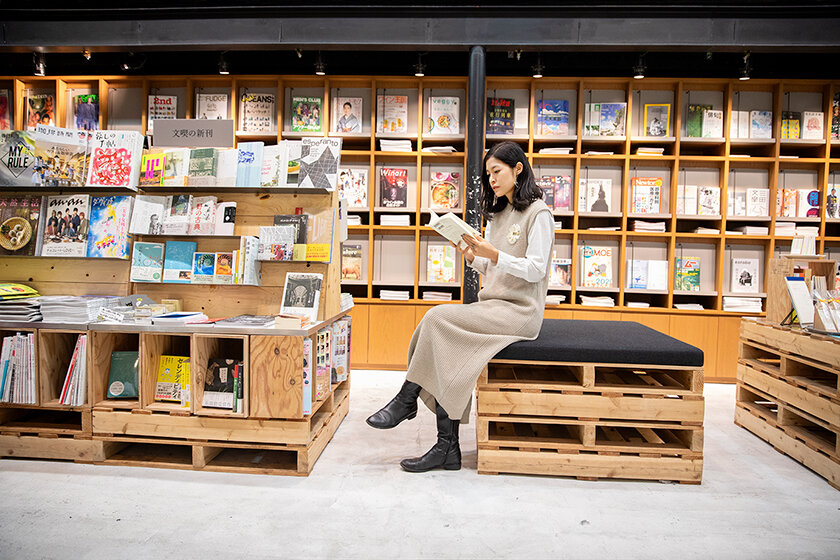
To "happen upon" remnants of a town's history
War comes up frequently in my works and a lot of people ask me if I like historical stuff. But what I actually value are the immediate things that exist within a one-meter radius or so. For example, if I trace back through those close to me like my mother and my mother's mother, I inevitably run into the topic of war. I only write about war because I can't depict the things I want to convey otherwise. The fundamental thing that drives my desire to write is my wish to know why I am living in this age, in this place, under these circumstances.
The one-meter radius pertains not only to those close to me, but also exist within districts. Sometimes I visit various towns before starting to write a book, where there are vestiges of all the different layers of history of each place. I get very excited whenever I discover some kind of fragment of those layers. When I wrote Trinity, Trinity, Trinity, I visited the tiny town of Jáchymov in the Czech Republic (its mines are known as the source of ore from which the Curies discovered radium).
When I walked down the Silver Road that runs through the center of town, I happened to look up and saw the Olympic rings emblem on a wall with the inscription "1936." Why was that there? Curious, I looked it up and discovered all kinds of things I never knew. 1936 was the year the Berlin Olympics were held under Nazi Germany and also the year of the first ever Olympic Torch Relay, but the next Olympics in 1940 had originally been planned for Tokyo. The only image of the "Tokyo Olympics" I had was the one held in 1964, and this was the first time I discovered the existence of a previous event that never happened.
The accidental discovery of that emblem taught me the history that gave birth to the story of Trinity, Trinity, Trinity, and I think it is an interesting coincidence that now a French translation of the book is about to be published in Paris, which is the next host of the Olympic Games. Happening upon fragmented remnants of the past in the places I travel to is a very stimulating experience for me. It may not be the kind of thing you would find in a guidebook, but I believe any town you visit has the potential to provide an encounter with something fascinating.
Exploring history in Roppongi, where diverse people intersect
I have the feeling Roppongi has a lot of these "remnants," too. For example, a small remnant of an old imperial army regiment remains in a section of the National Art Center, Tokyo. The history I learned from textbooks feels very distant to me, but it actually exists just one degree of separation away from the places in my life today. When I walk around town, I naturally run into buildings that existed when people as close to me as my mother's mother—my grandmother—lived, and encounter things that these people may have touched. All of these things I come across are a revelation. So if I were to think of a project set in Roppongi, I would want to start by exploring its history. It would be great to venture out on foot to hear about Roppongi's past and the stories from people who live here now.
In particular, Roppongi is a place where all kinds of people and cultures from around Japan and overseas intermingle, so whenever I pass by people on the street here, I'm always very curious about what kind of background they might have, where they came from, and how they're living now. Why Japan? Why Tokyo? Why Roppongi? Walking around town with an audio guide would be interesting, too.
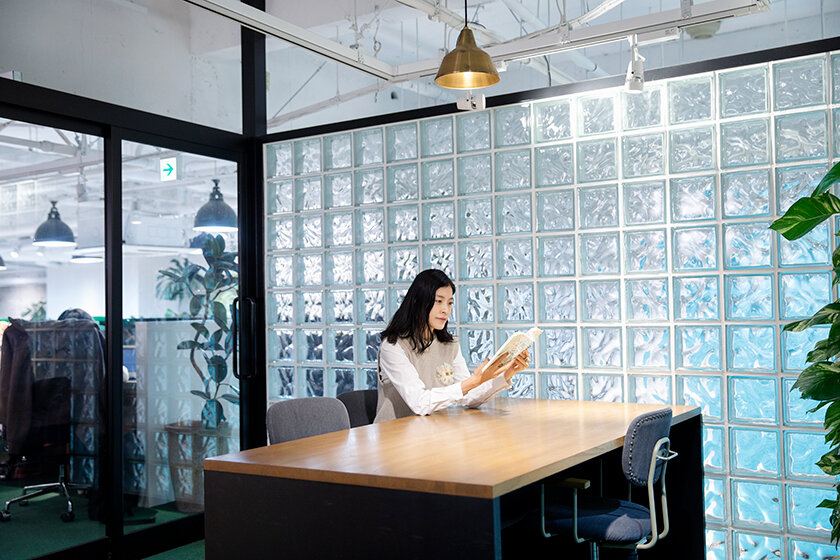
There is still plenty to find out about the metropolis that is Tokyo
Talking about this reminds me of Akira Takayama's project Tokyo Heterotopia. I had the opportunity to be a part of the first Heterotopia Riga, which involved writing stories on buildings with historical connections to both Riga and Japan. These stories, read by local narrators, were available for participants to listen to while visiting the actual buildings in question. The one I wrote was about a ghost telling the story of the building it haunted, based on actual history. More than anything, I thought the remarkable thing about the project was that one could listen to the story in the same place as its narrative setting.
Tokyo Heterotopia
A project conceived by Akira Takayama that started in 2013 and continued to expand through 2020. Participants tour around the city with a guidebook and radio in hand. Visiting the locations on the map and tuning into specified radio frequencies allow participants to hear site-specific stories written by five different poets and novelists specifically for this project. In allowing a "voyage" through the supposedly familiar city of Tokyo as if it is a foreign land, the project invites in countless moments of happenstance, adding a layer of encounters that is unique to each participant.
Photo: Masahiro Hasunuma
Heterotopia Riga
A 2019 project done in Riga, the capital of Latvia. Similar to Tokyo Heterotopia, participants visited six locations in the city of Riga with a guidebook and radio in hand. Visiting the locations on the map allowed participants to hear stories written specifically for the project by six different writers from Riga and Japan. The tour followed the time spent in Riga by military spy Makoto Onodera and his wife Yuriko Onodera, the original Japanese translator of the Moomin series. Erika Kobayashi was one of the writers for the project. The photo shows a participant listening to Kobayashi's story in the stairwell of the apartment where the Onoderas once lived.
Photo: Juris Rozenbergs
I can't help but wish that Takayama-san would do a "Roppongi Heterotopia" with all the buried history here (laughs). I actually participated as an audience member in Tokyo Heterotopia back when it was put on at Festival/Tokyo 2013 (F/T13). I would walk to each location, and while I experienced what was going on around me amidst all of the surrounding environmental noise, the radio alone whispered tales of past history into my ear. I thought that was really interesting.
I've rediscovered that I really like Tokyo. I've always liked large cities that are amalgamations of diverse aspects, and the fact that Tokyo is where I was born and grew up is certainly a factor. But more than that, I think Tokyo still has so much more potential. There are still countless aspects of Tokyo that I have yet to uncover, and the idea of investigating them is very exciting. There are many things about Tokyo and perhaps about Japan as a whole that I find somewhat stifling, like the politics and the expectation to conform, but I believe there is potential for change and for the city to get even more interesting.
Something "invisible to the eye" seen through picture book making
The other interest that I am exploring is picture books. This summer, I am planning to publish the first of a series of picture books with death as the theme, which is what I am working on preparing for at the moment. With death becoming more of an immediate topic with earthquake disasters and the coronavirus pandemic, there are many more things I think about now on a daily basis, like how I should convey the topic of death to children, and whether I will be able to actually talk with children about it. This might be because when I was a child, the thought of dying scared me more than anything else.
Instead of through my own children, more often than not these days I find myself thinking about the topic based on my own childhood. Of course there is a lot I have forgotten but I feel that now that time has passed, I can finally think about past memories without anxiety and put them into words. I once heard Sergii Mirnyi, a journalist who covered the Chernobyl Nuclear Power Plant disaster, say that local residents did not start talking about the incident until twenty years later. I think it's very true that some things are difficult to talk about for ten or twenty years afterwards, and that some things are impossible to talk about even after twenty years. Painful experiences such as the death of someone close to you are especially hard to put into words, in my experience. Thinking about that makes me curious about the passage of time within my soul.
But that doesn't mean my topic of interest has shifted in my writing. I want to continue writing about radioactivity and war, and I believe the theme of "things that are invisible to the eye" will always be a topic of fascination for me.
(Photography cooperation: Bunkitsu)
Editor's thoughts
Kobayashi-san's works remind us of the warmth and important truths embedded in the invisible things that exist in our daily lives. The words "radioactivity" and "war" may sound full of hostile energy, but Kobayashi-san's ideas and creations actually exist on the opposite end of the spectrum. Talking with her has made me want to reach out and find the voices that have slipped just beyond notice into the cracks of everyday life and trace the beautiful stories left behind by people from the past, inadvertently buried away from sight. When I do, I will be sure to assume I know nothing, and use my imagination to try to understand. Kobayashi-san's comforting voice and gentle way of talking made this interview a very soothing experience.(text_akiko miyaura)
RANKING
ALL
CATEGORY




